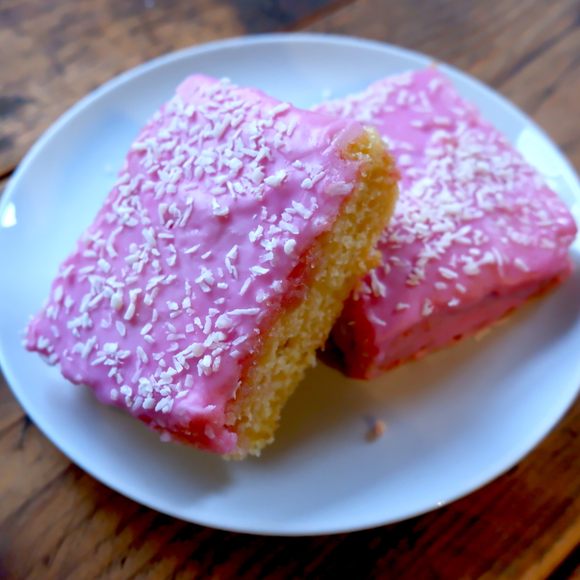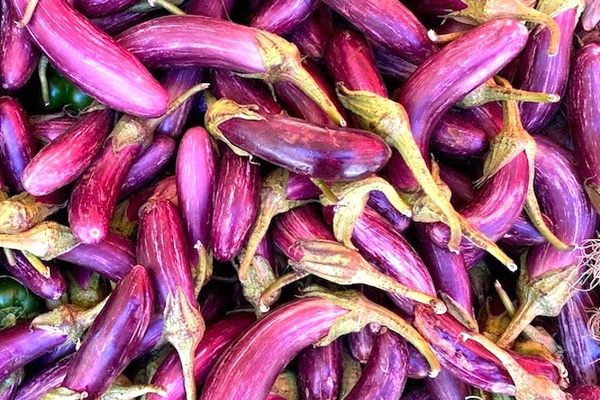Topped with garish pink icing and baked in a sheet pan, Tottenham cake is an old-fashioned treat. Slices of this coconut-bedecked cake are sold in bakeries around the United Kingdom. But it has one particular feature that sets it apart from other cakes: its connection to football (or, as it’s known in the USA, soccer) victory.
First baked by local Quaker Henry Chalkley in the early 20th century, the cake’s bright pink icing came from mulberries plucked in Tottenham, a town within the unassuming North London district of Haringey. In 1901, slices of the cake were handed out to children for free to celebrate the Tottenham Hotspur Football Club winning the Football Association Cup in 1901. Ever since, it has been indelibly associated with the sport, to the point that a century later, the cake is still served at the Tottenham Hotspur stadium for special occasions.
Siobhán Haire, deputy recording clerk and member of the Tottenham Meeting House, says that the cake is a symbol of traditional Quaker values. It’s “cheap to produce, and sell and thus accessible to everyone, which probably speaks a little to Quaker testimonies of simplicity,” she says.
There is still a mulberry tree to be found in the Quaker burial ground, which has found a new life as a community garden today. Until recently, local historian and Quaker Peter Brown was known for baking Tottenham cake with the mulberries. Sadly, Brown passed away in 2022, but Sainsbury’s Magazine has archived his recipe for curious bakers to try.
According to culinary historian Regula Ysewijn, the cake’s main feature is its pink icing is thin enough to soak through the sponge and turn it even pinker. The cake then can be decorated either with colorful hundreds and thousands (sprinkles) or desiccated coconut.
In her book Oats in the North, Wheat from the South: The History of British Baking, Savoury and Sweet, Ysewijn described a version of the cake that she found in a cookbook from 1909.
That early recipe produced a “giant” cake made with five kilograms, or around 11 pounds of flour, but no egg and barely any sugar, so Ysewijn concludes that it was “clearly cheap to make.” Since oddly-shaped side pieces were even cheaper back in the day, even more children were able to enjoy it, making nostalgia a huge part of its appeal.
“It appeals to children because of the colors, and it appeals to parents because it doesn’t cost a lot to buy a treat,” says Ysewijn.
Written By
 jennifersizeland
jennifersizeland












